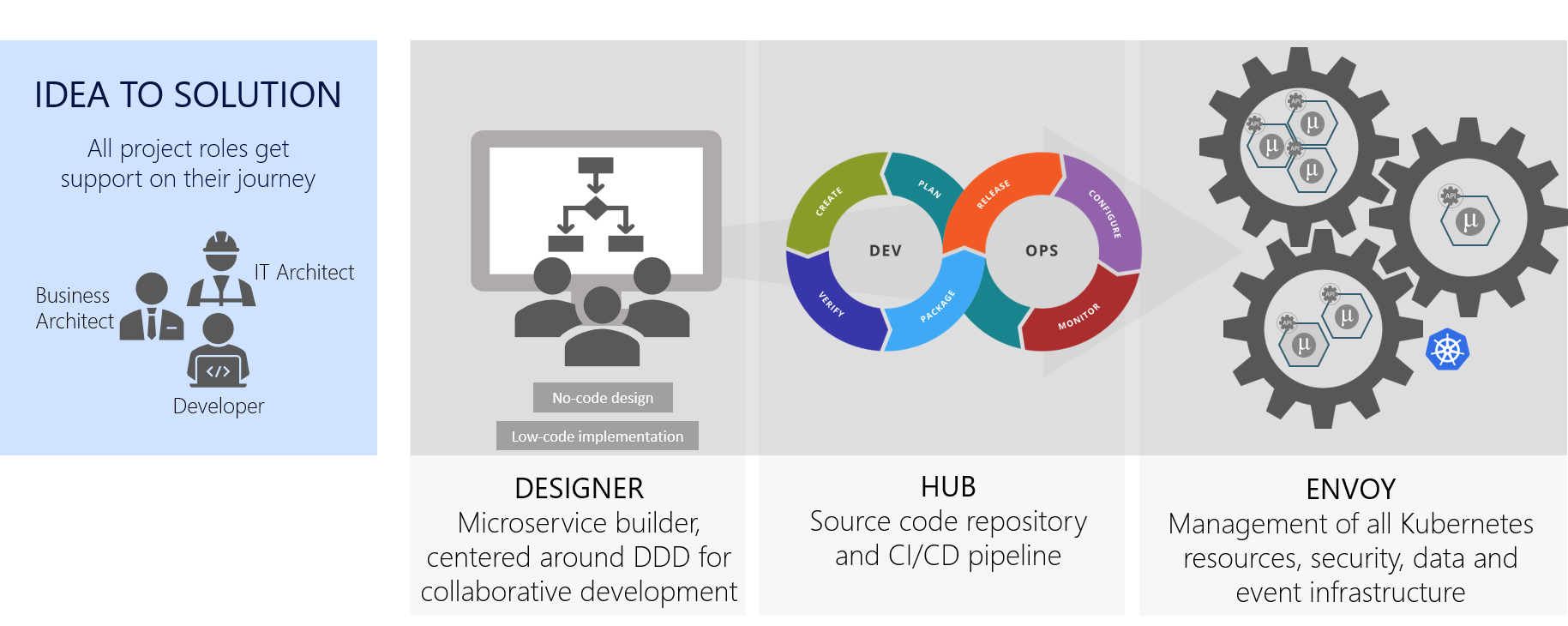Components
Taking an opinionated approach towards a state-of-the-art solution architecture, the IBM Financial Services Workbench empowers customers to bring their solutions to market in an efficient and timely manner. It does so by providing tailor-made tools for the different roles involved in designing, implementing and testing these solutions.
Business analysts and developers can work on a shared domain model, thereby eliminating friction and misunderstandings during development. The IBM Financial Services Workbench then transforms this model into a best-practice architecture, based on open standards.
In addition to custom code development options, the offering introduces a no-code design and low-code implementation environment based on Domain Driven Design. The IBM Financial Services Workbench leverages best-of-breed open source tooling to offer a pre-integrated and automated pipeline, including packaging and auto-deployment, as well as monitoring capabilities.

Solution Designer
The Solution Designer is comprised of a set of tools that allow solution creators, i.e. business analysts and developers, to work together seamlessly via a shared repository.
Most prominently, it features a no-code design tool that can be used to model business domains following the principles of domain-driven design. Developers can use the low-code support to implement the solution based on the domain specification. Changes to the domain model will automatically be reflected in the generated code, so that developers can securely adapt the implementation to changed specifications.
Furthermore, the Solution Designer provides access to a local marketplace to share domain specifications or import prebuilt domain specifications to jump-start the development of new solutions.Solution Hub
Solution Hub connects the Solution Designer with the OpenShift projects where the developed solutions are automatically deployed. In Solution Hub you have access to all connected Openshift Projects of IBM Financial Services Workbench and also to the deployments. You can manage the build and/or deploy pipeline configurations. The predefined pipeline tasks contain extensive checks. This ensures that contained implementation code meets the domain model requirements, that dependencies are free of security issues, and that target environments meet implementation criteria. As part of the build process, solutions are transformed into microservices that follow current best-practice architecture blueprints. Solution Hub additionally takes care of the configuration management.
Solution Envoy
By deploying Solution Envoy to an OpenShift project, you can run, manage and monitor solutions built with the Financial Services Workbench. Solution Envoy promotes current best practices for successful operations such as log consolidation, monitoring, tracing, and metering. Running on OpenShift, it paves the way for scalability and robust and secure operations.